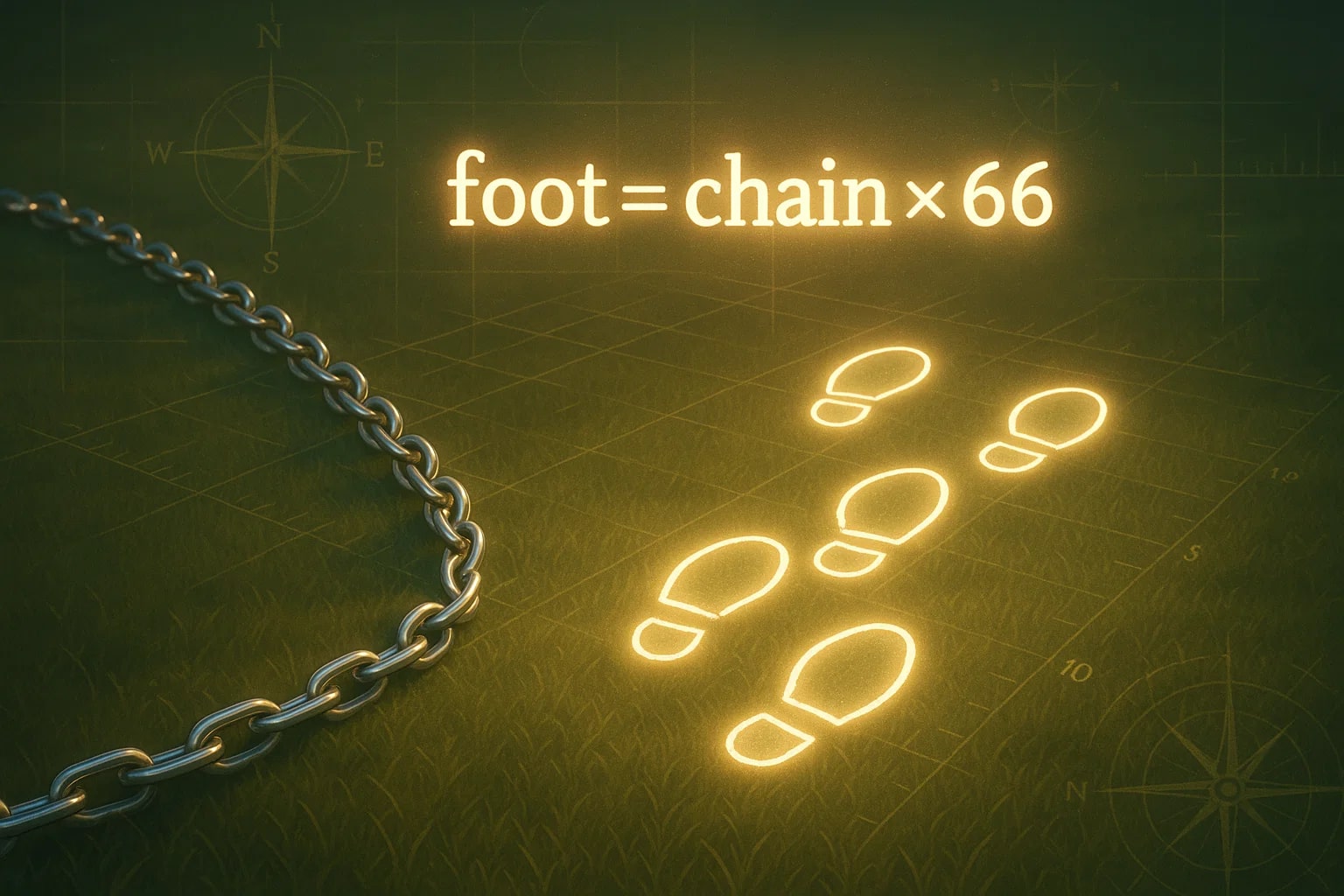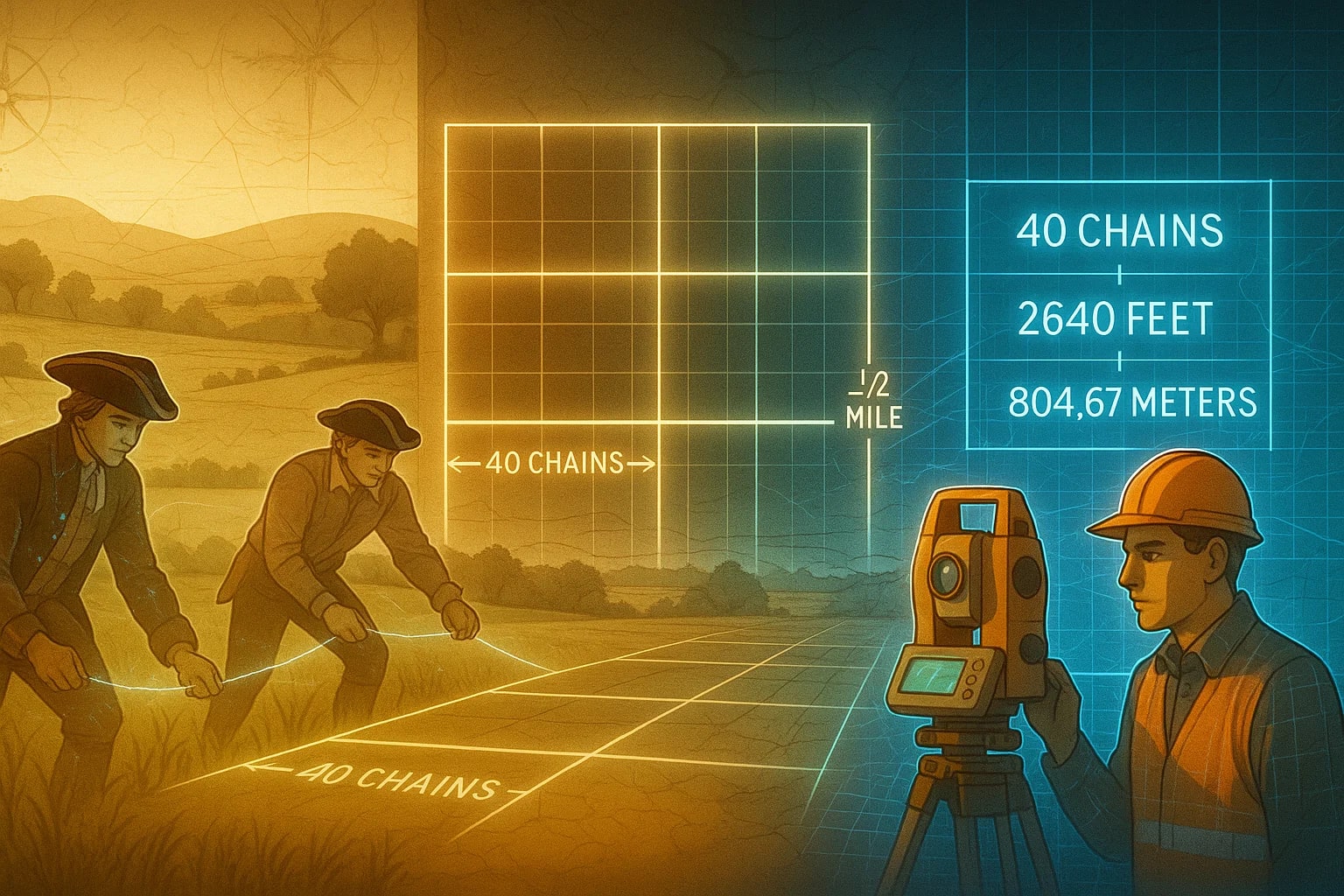chain to foot – How to convert ch to ft
Converting from chain to foot connects traditional land surveying with modern measurement practices. Chains are an old unit still found in surveying records, while feet remain widely used in construction and real estate. Knowing how to convert ch to ft allows you to interpret historical documents and apply them to current systems with ease.

What is a Chain (ch)?
A chain is a traditional unit of length used in land measurement. It equals 66 feet or 22 yards. One chain was divided into 100 links, making it practical for surveying large areas of land with accuracy. It was introduced by Edmund Gunter in the early 17th century and became a standard unit in English-speaking countries.
What is a Foot (ft)?
The foot is an imperial unit of length equal to 12 inches or 0.3048 meters. It is widely used in the United States, the UK, and various industries worldwide for construction, architecture, and real estate.
How to Convert ch to ft
The formula is:
foot = chain × 66
For example, let’s convert 3 ch into feet:
foot = 3 × 66 = 198 ft
So, 3 ch = 198 ft.
For exploring other related conversions, see the Length Converter or the complete Conversion Tools.
Do you know?
-
The chain was invented in 1620 by English clergyman Edmund Gunter and became known as Gunter’s chain, a surveying tool that shaped land records for centuries.
-
One acre of land was historically defined as 10 square chains, showing how deeply this unit was embedded in agriculture and property law.
-
The foot has ancient roots, used by Romans, Greeks, and Egyptians. Its length varied by culture until it was standardized to exactly 0.3048 meters in 1959.
-
In railway engineering, chains were once used to record distances along track lines, a practice that persisted into the 20th century in the UK.
Surveying History: Mapping Lands with Chains and Feet
In colonial America, much of the land was surveyed and divided using Gunter’s chain. Surveyors stretched the physical chain across fields, recording distances in chains and links. These records, once converted to feet, still influence property deeds and maps today.
For example, Thomas Jefferson advocated the use of chains in the Public Land Survey System, which organized territories into grids. Many legal land descriptions still reference chains, requiring modern surveyors to convert values into feet or meters for today’s work.
The simple conversion 1 chain = 66 feet is therefore more than math—it is a bridge between centuries of surveying tradition and modern engineering practice.

Linking the Past and the Present
The conversion from chain to foot captures how measurement units evolve with society. Chains may no longer be common in daily use, but their legacy remains visible in maps, land deeds, and historical surveys. Feet, on the other hand, continue to be central to construction and property measurement today.
By mastering this conversion, you can read old records with confidence and connect them to current standards. It’s a reminder of how even outdated units still influence our modern world.

